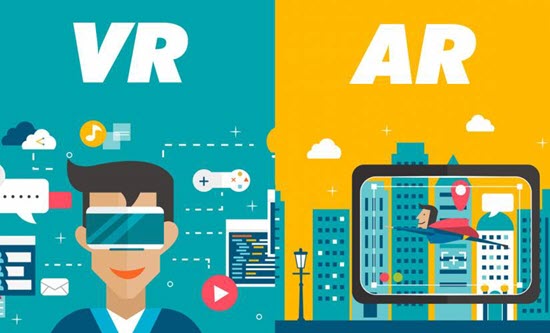E-Learning and VR/AR: a Match Made in Digital Heaven
If you’re wondering how e-learning and virtual or augmented reality can work together, you’re not alone. Many startups leverage the VR and AR technologies and have investor support. And it seems like the market is finally ready to get some hands-on experience using a head-mounted display. Customers spent $3,5 billion on virtual and augmented reality content and applications in 2018 alone. What’s more, the investments are expected to double by 2021.
Augmented and virtual reality technologies promise to change the access and delivery of learning. So, let’s take a look at the peculiarities of VR and AR, how gamification helps us learn and what are some solid examples of applying virtual and augmented reality in e-learning.
The Difference Between VR and AR
Let’s set this straight right away. Virtual reality creates an immersive world for users to explore dynamic 3D environments. To immerse yourself in virtual reality, you’ll need a special VR headset or HMD (aka head-mounted display) that’s connected to a computer or other source of VR content. You’ll also need some controllers and headphones for the full presence effect. Having a motion platform or an omnidirectional treadmill that would complement all that would be perfect.
Augmented reality, on the other hand, expands or enhances the physical world. It uses physical objects to trigger (and anchor) a simulation of sound, graphics or video over the real environment. To interact with AR, all you need a smartphone, a tablet, AR glasses or someday even AR contact lenses. And since more people own a smartphone than a VR headset, augmented reality is more popular than virtual reality.

How E-Learning Benefits from VR and AR
E-learning apps are excellent for engaging learners and grabbing their attention. Still, they don’t allow you to interact with objects and the environment. But once e-learning adopts AR or VR, engagement and immersion are guaranteed. Plus, with major distractions blocked, learners are focused on trying new things and practicing new skills in a setting that mimics the real world. After all, 3D simulation improvesthe brain’s ability to process new information.
Another value of VR in e-learning is micro monitoring. Teachers can get the full picture of learners’ sessions: where they looked and what they did, what issues they had and what particularly caught their attention. This allows teachers to offer more personalized content – all for the sake of meeting learners’ expectations and company goals.
AR has two significant benefits: it doesn’t require additional expensive equipment, and you won’t get motion sickness from it. Students can simply point a smartphone at a skeleton, and the app will show them the name of every bone. A new employee can use an AR app at a workplace to see the necessary step-by-step instructions. AR can help sales managers and support agents service customers by showing them numbers or details in front of their eyes.


